Historic towns of Kaysersberg and Kientzheim, so close yet so far
Read this post on TravelFeed.io for the best experience
.png)
There was
no mistaking we were in Alsace. One look at the colorful half timbered houses
and the vineyards stretching out on a hill above the town was enough to tell us
so. The Christmas store was a good clue too, as we had never seen anything like
it elsewhere in France. Alsatian villages boasted indeed the most famous
Christmas markets in the country with Kaysersberg ranking among the most
beautiful markets of all. In mid-July, enough to say that Christmas was still
months away but Kaysersberg was as magic as we had been told.
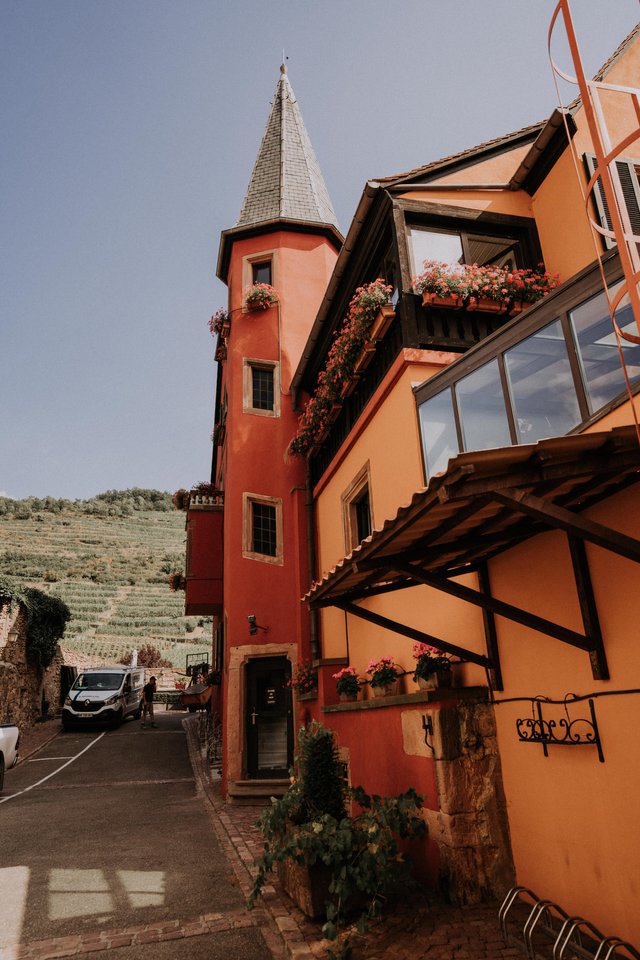
Just like every Alsatian village, Kaysersberg was pretty small and its historic district
even more so. There was a long street running through the village, a few cobblestone back alleys going in every direction, a pathway following the ruins of ancient defensive walls and that was about it. Yet, the town was packed with historic
buildings that seemed to have withstood the test of time since the Middle Ages.
The Church Saint-Croix was supposedly the oldest, dating back to 1230, while
the Oberhof Chapel had been built in 1391. Overlooking their timber roofs, the
remnants of the old castle of Schlossberg were no stranger to the atmospheric
looks of the town either.
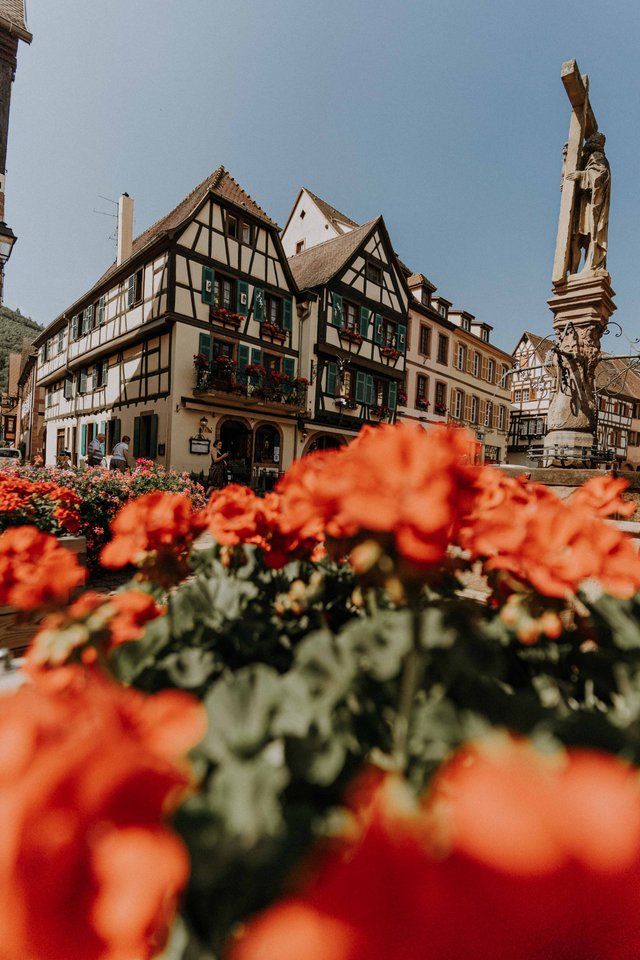
Kaysersberg had been crowned France’s favorite village in 2017, winning the hearts of the
viewers of the annual TV show “Le village préféré des Français”. Even though
the village had been on many local visitors’ radar for much longer, its
popularity had soared since then. Ultimately, the number of tourists had soared too but the tranquility of the place seemed relatively undisturbed. While visitors
were taking selfies on the ancient fortified bridge, the surrounding streets
were quiet and devoid of crowd. While tourists were busily shopping on
souvenirs, local elders were routinely feeding breadcrumbs to the trout swimming by the narrow Weiss River.
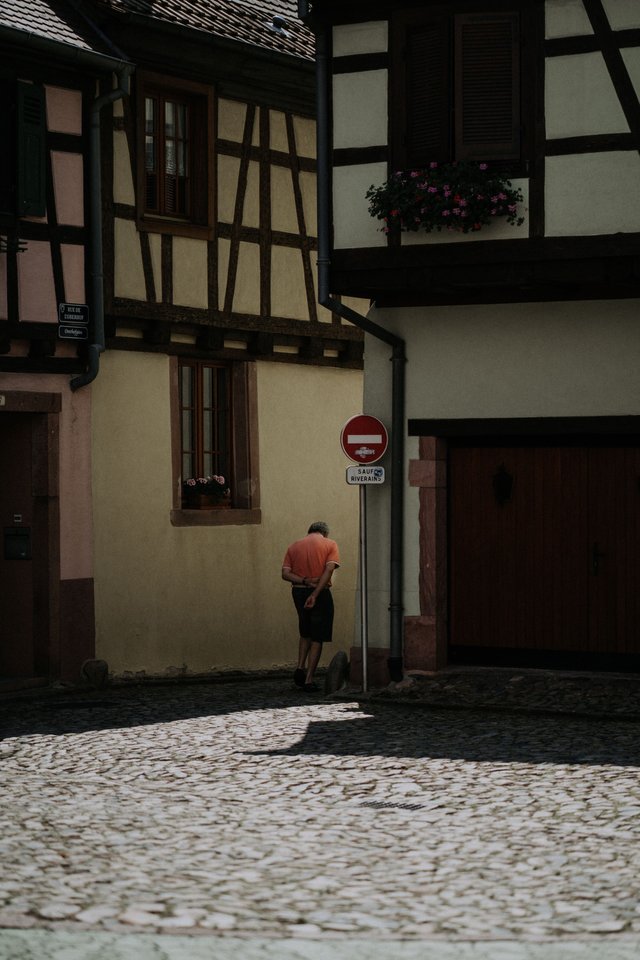
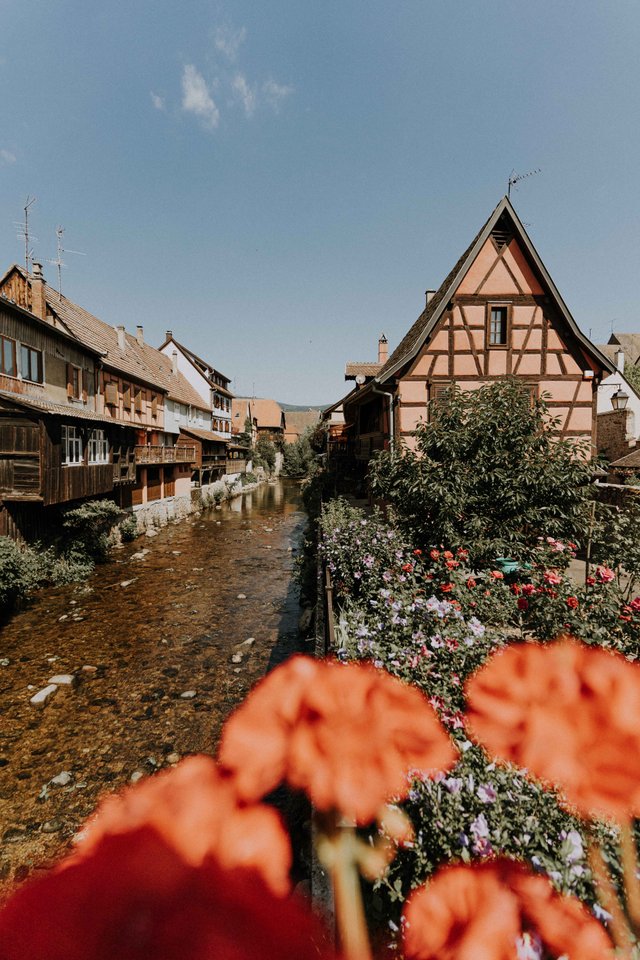
Indulging in the beautiful looks of the medieval mansions overhanging the river and their
ornate wooden balconies, we then found a flight of stairs leading to the Schlossberg
Castle. Mostly in ruins, all that was left of the fortress was a tower and a
few fortifications but its location atop a hill offered commanding views over
Kaysersberg and the neighboring villages. It was also the perfect place to take
in the sight of the vineyards stretching as far as the eyes could see.
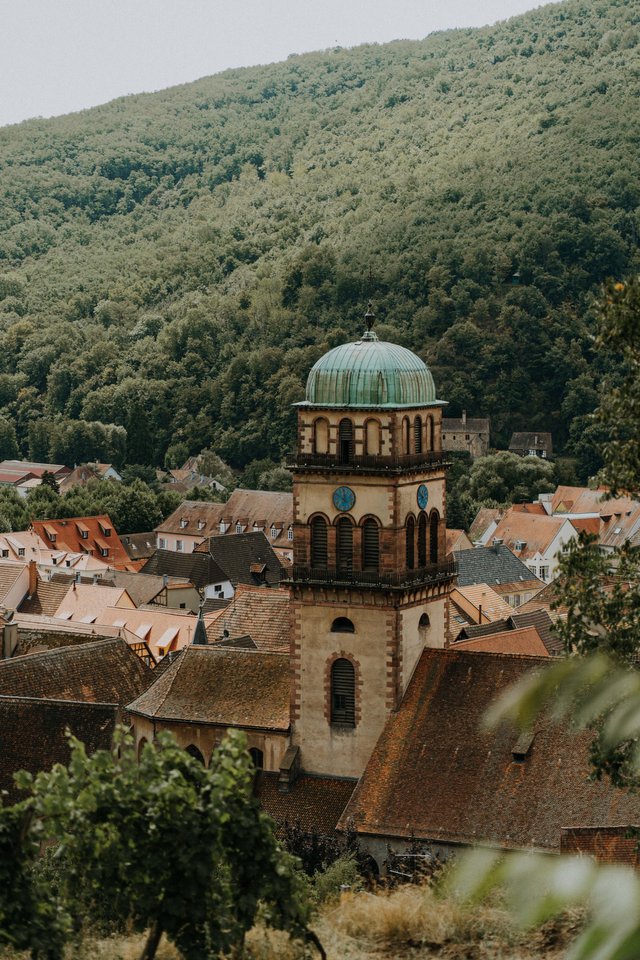
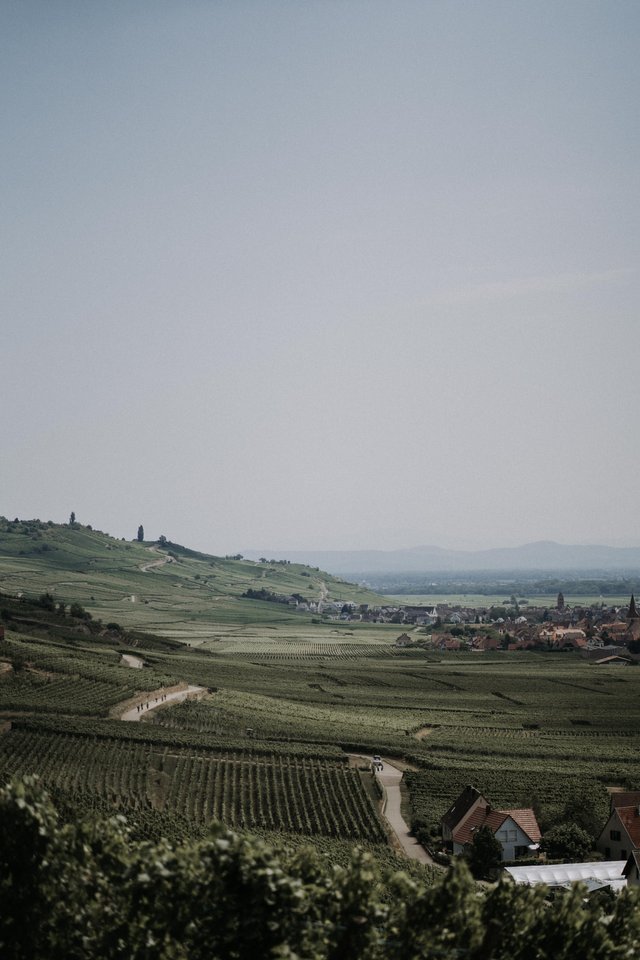
On our way back, we decided to walk down a pathway winding through the small patches of
vineyard, all labelled with the names of their owner. The path seemed a little
steep and pebbly but we went on until it was nothing but gravel and holes. As
it turned out, we had taken the wrong turn so we backtracked to find the right
trail, wondering how on earth the local wine-makers would be able to harvest
their grapes on such treacherous grounds.
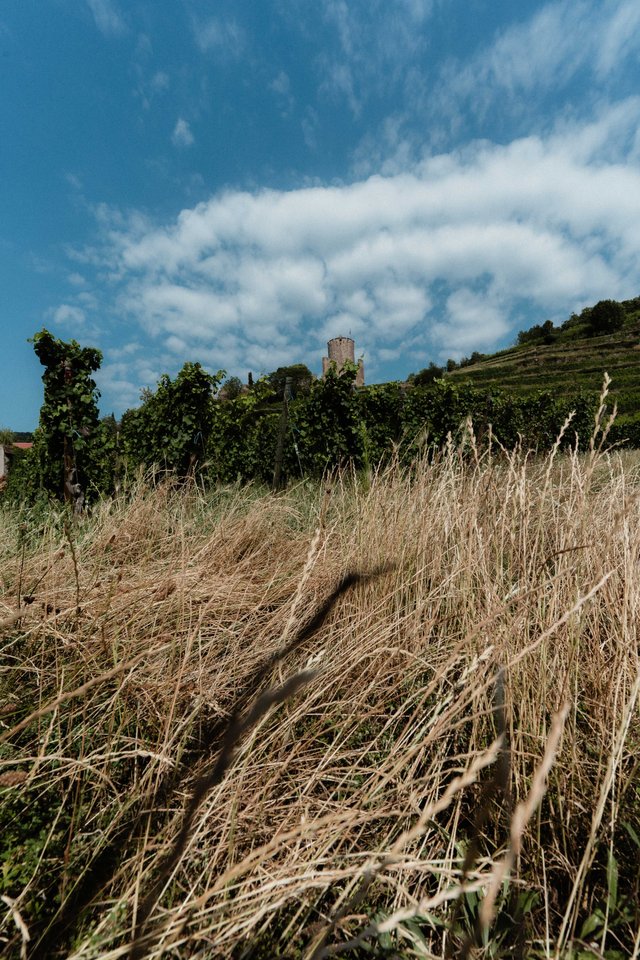
Back on firm ground, we took one last look at the fiery fortress over the vineyards while
feasting on local truffle cheese and cervelas sausage. Then, we made our way to Kientzheim. By car, it took us no more two minutes. The village of Kientzheim
was indeed directly next to Kaysersberg. In fact, we could have even left the
car parked in the latter and walked to the former, as if Kientzheim was but an
extension of its famous neighbor. Yet, the atmosphere was nothing alike.
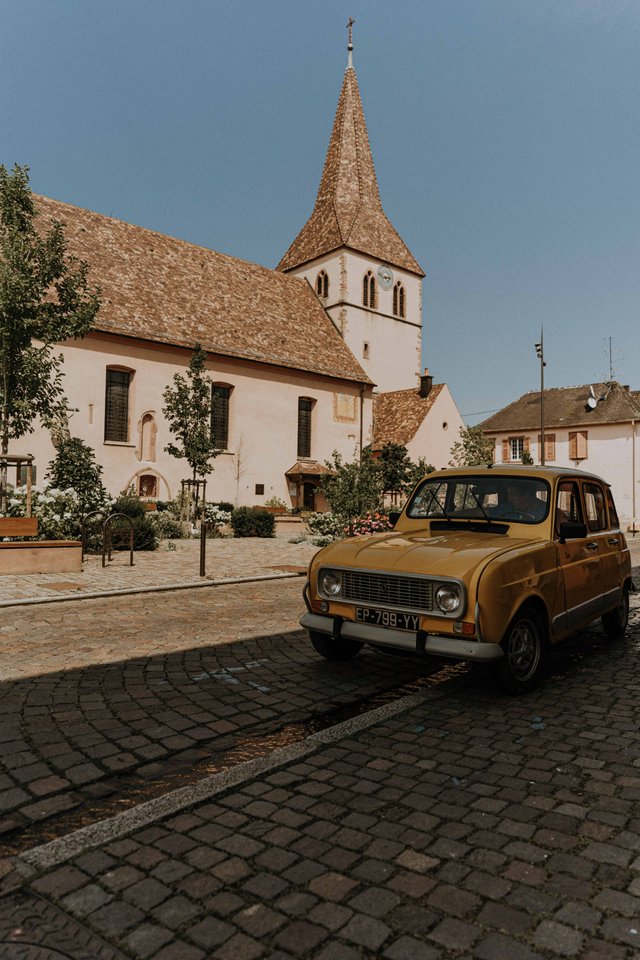
Surprisingly, there wasn’t a soul in the streets of the village. No passers-by and certainly
no tourists. The church in the middle of the village was beautiful though and
the colorful medieval houses on the main square were equally as charming. The
village was surrounded by vineyards and by a well-preserved fortification wall
circling around ancient houses. There was an alluring fountain in the center of
town, the Schwendi fountain paying tribute to local wine-makers. Wandering
around town, we also found a unique chapel boasting painted votive offerings
the likes of which we had never seen. Yet, Kientzheim was completely off the beaten
track, save for a cosy hotel that was probably used by tourists planning a day
trip to nearby Kaysersberg.
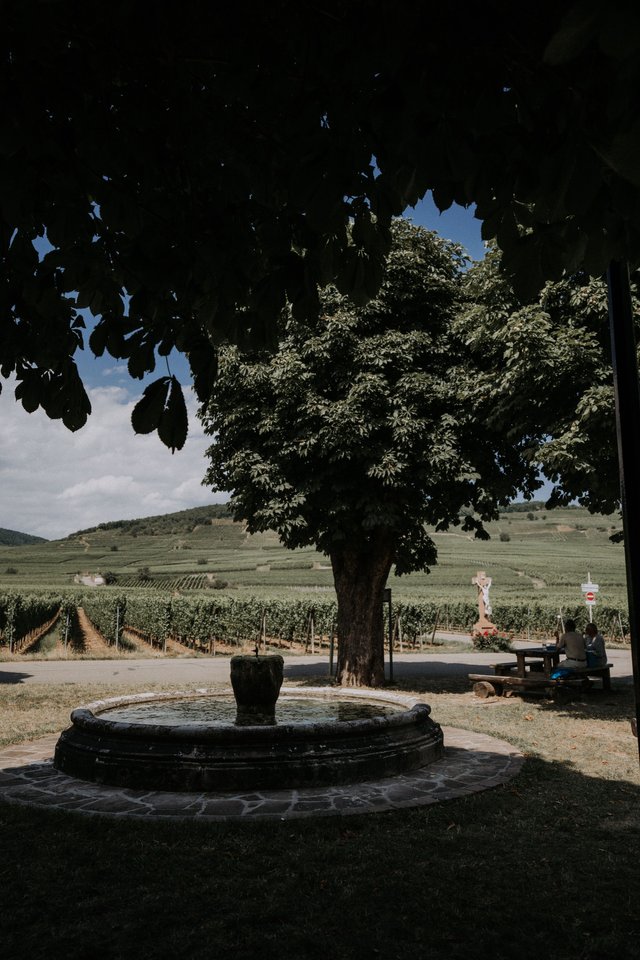
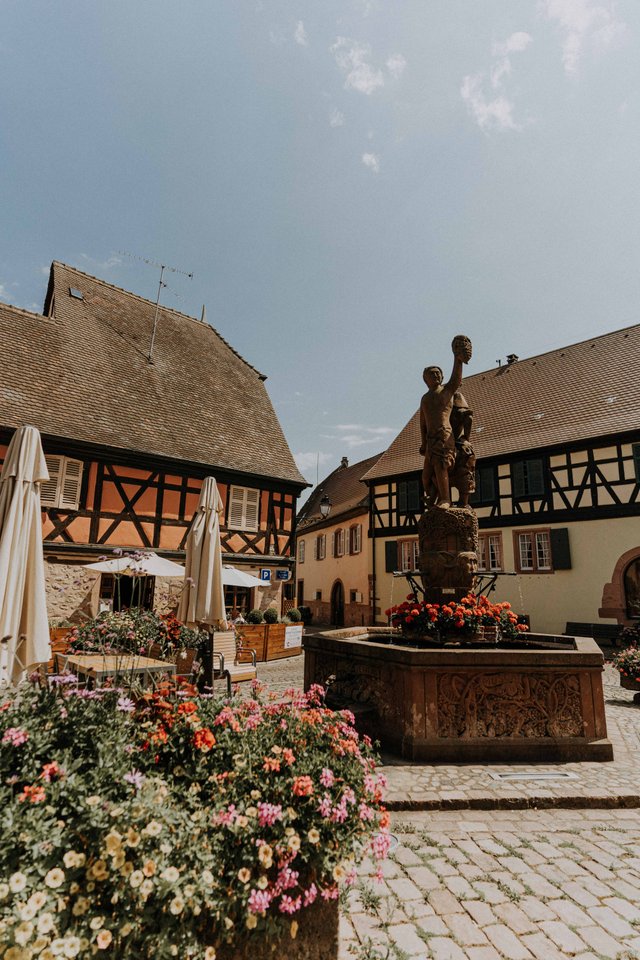
Of course Kaysersberg was bigger and the architecture around town was more diverse. Yet, Kientzheim had an enduring, old-fashioned charm and it literally took a few minutes to get from one village to the other. There probably lied, in part, the power of marketing. After all,one had not been named
France’s favorite village. Maybe it was for the best, as both Kaysersberg and Kientzheim each had their own appeal, despite being so close to one another.
Congratulations @haydae! You received the biggest smile and some love from TravelFeed! Keep up the amazing blog. 😍 Your post was also chosen as top pick of the day and is now featured on the TravelFeed.io front page.
Thanks for using TravelFeed!
@elsaenroute (TravelFeed team)
PS: Why not share your blog posts to your family and friends with the convenient sharing buttons on TravelFeed.io?